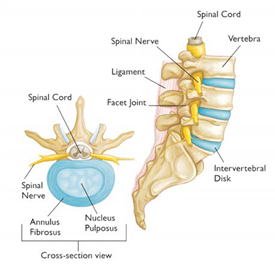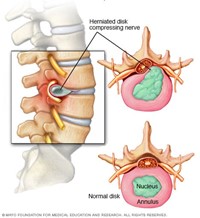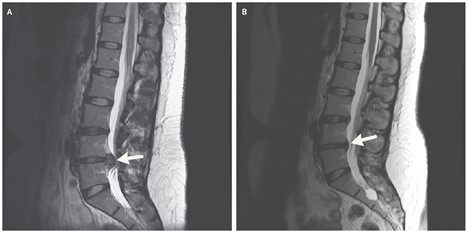Today I’m sharing a summary of new research on spinal discs that changed the way I practice and should help many of you in pain feel more at ease.

In between each the vertebrae of your spine, lie intervertebral discs. We will refer to them as discs for clarity. Many times, we are led to believe discs are fragile. We see pictures of herniations or ”bulges” that scare us.

Scary stuff….or is it?
Many times, this fear leads us to avoid movement and engaging with the activities we love to do. But I’m here to provide research-based tangible hope so it all comes together.
One lumbar disc can withstand compression forces more than double your body weight (This is only 1 disc, so imagine how strong and robust our spines are when you combine all 23 discs working together)[i]
Discs can heal on their own![ii] Our bodies are not machines, we are dynamic. We’re constantly recycling and creating new cells in our bodies every second of every day, and this includes our discs as well! The same study as our picture below clearly states that >90% of symptomatic individuals recover without surgery. In fact, the bigger the disc herniation, the more likely it is to heal on its own![iii]

This individual chose to try conservative treatment prior to surgery and MRI scans showed complete healing of her disc within 5 months, but more importantly a return to function with resolution of symptoms
If there are no dumb questions then let’s ask the obvious. Do bigger disc herniations/bulges mean more pain? Surprisingly, NO. Several MRI studies have not been able to link the size or severity of a herniation to a pain level.[iv] Big herniations can be less painful than smaller herniations.[v]
Quick recap. Discs can heal on their own, and the bigger the herniation/bulge the more likely! This is why when we work with you, we want to understand and alleviate your pain, but our ultimate goal is to reactivate you! We want you to return to you daily activities as well as what you love to do! There are no quick fixes, but rest assured we can create a plan that works for you!
By Dr. Christian Bechara, PT, DPT
10/14/2021
[i] Wang, S., Park, W. M., Kim, Y. H., Cha, T., Wood, K., & Li, G. (2014). In vivo loads in the lumbar L3-4 disc during a weight lifting extension. Clinical biomechanics (Bristol, Avon), 29(2), 155–160. https://doi.org/10.1016/j.clinbiomech.2013.11.018
[ii] Hong, J., & Ball, P. A. (2016). Resolution of Lumbar Disk Herniation without Surgery. New England Journal of Medicine, 374(16), 1564. https://doi.org/10.1056/nejmicm1511194
[iii] Zhong, M., Liu, J. T., Jiang, H., Mo, W., Yu, P. F., Li, X. C., & Xue, R. R. (2017). Incidence of Spontaneous Resorption of Lumbar Disc Herniation: A Meta-Analysis. Pain physician, 20(1), E45–E52.
[iv] Karppinen, J., Malmivaara, A., Tervonen, O., Pääkkö, E., Kurunlahti, M., Syrjälä, P., Vasari, P., & Vanharanta, H. (2001). Severity of symptoms and signs in relation to magnetic resonance imaging findings among sciatic patients. Spine, 26(7), E149–E154. https://doi.org/10.1097/00007632-200104010-00015
[v] Karppinen, J., Malmivaara, A., Tervonen, O., Pääkkö, E., Kurunlahti, M., Syrjälä, P., Vasari, P., & Vanharanta, H. (2001). Severity of symptoms and signs in relation to magnetic resonance imaging findings among sciatic patients. Spine, 26(7), E149–E154. https://doi.org/10.1097/00007632-200104010-00015

Recent Comments